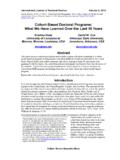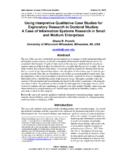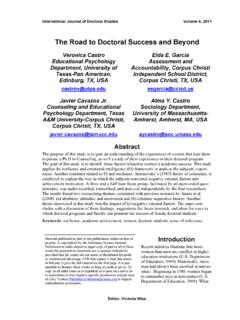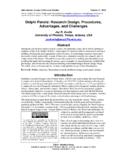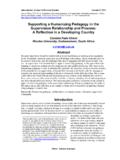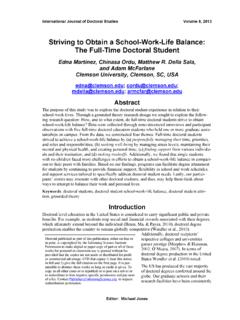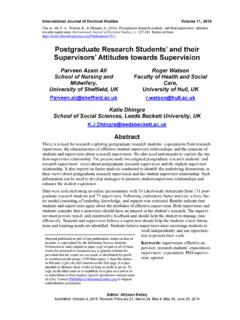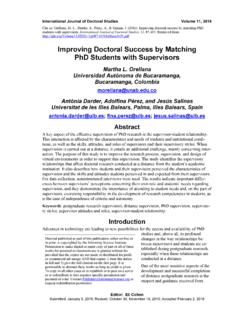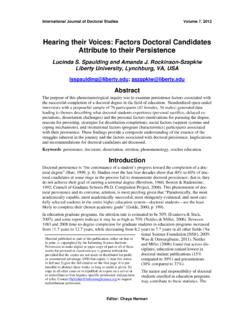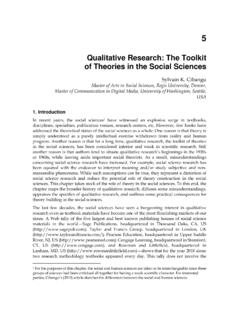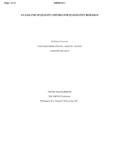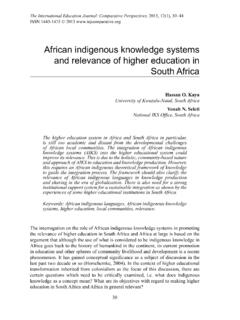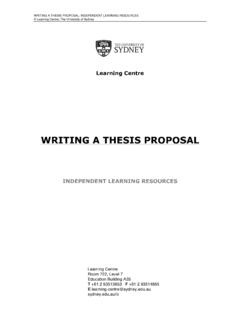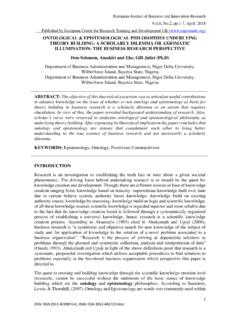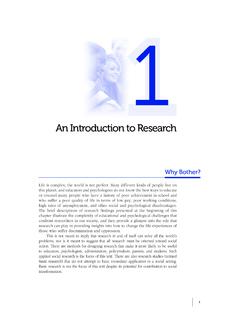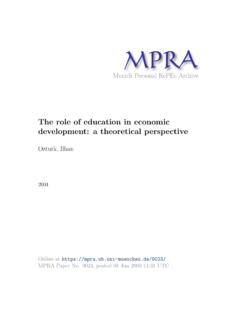Transcription of Describing Populations and Samples in Doctoral Student ...
1 Vo l u m e 16, 2021 Accepting Editor Eli Cohen Received: January 22, 2021 Revised: April 29, 2021 Accepted: May 3, 2021. Cite as: Casteel, A., & Bridier, N. L. (2021). Describing Populations and Samples in Doctoral Student research. International Journal of Doctoral Studies, 16, 339-362. (CC BY-NC ) This article is licensed to you under a Creative Commons Attribution-NonCommercial International License. When you copy and redistribute this paper in full or in part, you need to provide proper attribution to it to ensure that others can later locate this work (and to ensure that others do not accuse you of plagiarism).
2 You may (and we encour-age you to) adapt, remix, transform, and build upon the material for any non-commercial purposes. This license does not permit you to use this material for commercial purposes. Describing Populations AND Samples IN Doctoral Student RESEARCH Alex Casteel* Grand Canyon University, Phoenix, AZ, USA Nancy L. Bridier Grand Canyon University, Phoenix, AZ, USA * Corresponding author ABSTRACT Aim/Purpose The purpose of this article is to present clear definitions of the population structures essential to research, to provide examples of how these structures are described within research, and to propose a basic structure that novice research-ers may use to ensure a clearly and completely defined population of interest and sample from which they will collect data.
3 Background Novice researchers, especially Doctoral students, experience challenges when de-scribing and distinguishing between Populations and Samples . Clearly defining and Describing research structural elements, to include Populations and the sam-ple, provides needed scaffolding to Doctoral students. Methodology The systematic review of 65 empirical research articles and research texts pro-vided peer-reviewed support for presenting consistent population - and sample-related definitions and exemplars. Contribution This article provides clear definitions of the population structures essential to research, with examples of how these structures, beginning with the unit of analysis, are described within research.
4 With this defined, we examine the popu-lation subsets and what characterizes them. The proposed writing structure pro-vides Doctoral students a model for developing the relevant population and sample descriptions in their dissertations and other research. Findings The article describes that although many definitions and uses are relatively con-sistent within the literature, there are epistemological differences between re-search designs that do not allow for a one-size-fits-all definition for all terms. We provide methods for defining Populations and the sample, selecting a sam-ple from the population , and the arguments for and against each of the meth-ods.
5 Describing Populations and Samples 340 Recommendations for Practitioners Social science research faculty seek structured ways in which to present key re-search elements to Doctoral students and to provide a model by which they may write the dissertation. The article offers contemporary examples from the peer-reviewed literature to support these aims. Recommendations for Researchers Novice researchers may wish to use the recommended framework within this article when developing the relevant section of the dissertation. Doing so pro-vides an itemized checklist of writing descriptions, ensuring a more complete and comprehensive description of the study population and sample.
6 Impact on Society The scientific method provides a consistent methodological approach to re-searching and presenting research. By reemphasizing the definitions and appli-cations of Populations and Samples in research, and by providing a writing structure that Doctoral students may model in their own writing, the article sup-ports Doctoral students growth and development in using the scientific method. Future Research Future researchers may wish to further advance novice researcher knowledge in developing models to guide dissertation writing. Future studies may focus on other essential areas of research, including studies about recruitment methods and attrition strategies, data collection procedures, and overall research align-ment.
7 Additionally, future researchers may wish to consider evaluating Doctoral Student foundational knowledge about Populations and Samples as part of the research process. Keywords population of interest, target population , sampling frame, sample, unit of analy-sis, unit of observation INTRODUCTION As novice researchers, Doctoral students are new to the processes, procedures, and philosophical principles of developing research. Doctoral students experience challenges including, but not limited to, difficulties in selecting a research topic (Simui et al. , 2 018), recruiting participants (Marks et al.)
8 , 2017), developing interview protocols (Wohlfart, 2020), and data analysis (Lewis, 2020). An additional challenge is adequately Describing the population and sample of the study. To generalize results, one must b e able to infer or transfer those results to the appropriate group. However, the grouping of individuals can be complex and unpredictable, individuals may or may not want to be scrutinized and the characteristics being examined may change from day to day or even from hour to hour (Ham-mersley & Mairs, 2004). H uman characteristics are often hidden from superficial examination, pre-senting a challenge for the researcher in selecting an appropriate group to study.
9 As such, researchers are challenged with the task of identifying the characteristics of groups to be studied, and then de-scribing the boundaries the features that determine one s inclusion or exclusion to that group and doing so in a relevant context (Porzsolt et al. , 201 9) . The challenge of defining and Describing Populations and Samples becomes even more confusing to novice researchers. The purpose of this article is to present clear definitions of the population struc-tures essential to research, to provide examples of how these structures are described within the liter-ature , and to propose a basic structure that novice researchers may use to ensure they have clearly and completely defined the population they wish to study and the sample from which they will gather data.
10 In this article , we begin with the fundamental building block of any population : the unit of analysis. With this defined, we examine the population subsets and what characterizes them. We then examine methods for selecting a sample from the population and the arguments for and against each of the methods. Finally, we propose a fundamental outline to aid novice researchers in developing and Describing the individuals, groups, or organizations being studied. We use Bakibinga et al. s (2019) research of slums across four countries to illustrate the approaches used to describe various popula-tions and sampling methods discussed within this paper.
